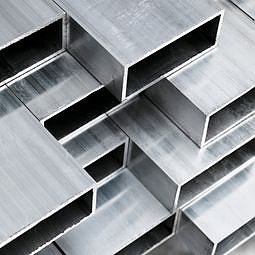
Because of how easy and versatile aluminum extrusions are to work with, there are naturally multiple ways for them to connect together to add further flexibility. Some T-slot aluminum connectors are more suitable for certain applications, while other methods may be more accessible for various uses. Let’s look at three methods for connecting aluminum extrusions and compare the benefits they provide.
Simple and reliable, M12 screws are great for connecting aluminum extrusion joints that don’t need to undergo frequent changes. Because there are no slot obstructions in the joint, M12 screws can work for panels, sheet metal, and similar objects. What the M12 does require, however, is an extrusion that has been tapped so that the screw can thread into it. Thankfully, this is a fairly small task and is possible without much hassle. From there, you can tighten the screw with a simple Allen wrench.
As the name suggests, a quick connector provides a quick and easy way to connect aluminum extrusions. It’s also adjustable. To use a quick connector, you need to drill a hole that the barrel and set screw can insert into successfully. Once you place the barrel, you must insert a stud into the end of the extrusion and press it until you can see the “O-ring.” From there, the stud head can slide into the desired joint location, much like the M12 screw.
Using gussets is perhaps one of the more heavy-duty methods. Manufacturers die-cast gussets with sturdy walls. They design them to connect two extrusions without drilling, tapping, or machining. This makes this connector one of the easiest for even novices to use, as it only requires two T-bolts. Furthermore, gussets have anti-rotation tabs that prevent the connection from becoming loose and ruining the frame as you’re trying to build.